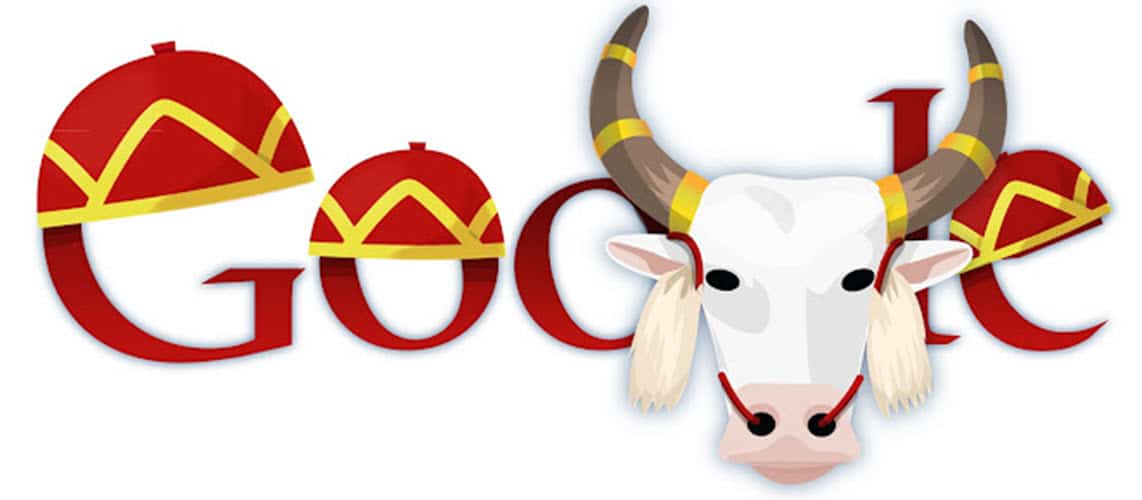Royal Ploughing Ceremony and Farmer’s Day: History, Theme, and Significance

The Royal Ploughing Ceremony, also known as the Farmer’s Day or simply the Ploughing Festival officially marks the beginning of the rice-growing season. This annual ceremony is held in many Asian countries, such as Cambodia and Thailand. The official Thai name for the Royal Ploughing Ceremony is ‘Raek Na Khwan’, which translates to ‘the auspicious beginning of the rice-growing season.
Royal Ploughing Ceremony in 2023 will be celebrated 0m 17 May. On 9 May 2012, google celebrated the Royal Ploughing Ceremony and Farmer’s Day.
History of Royal Ploughing Ceremony and Farmer’s Day
The Royal Ploughing Ceremony, also known as the Ploughing Festival, is an ancient royal rite that has been celebrated for centuries in Cambodia. The ceremony typically takes place in May or June to mark the beginning of the rice-growing season. The purpose of the ceremony is to predict the harvest for the upcoming season and to bless the crops.
The event involves two sacred oxen that are decorated with gold and other ornaments and harnessed to a plough. They are led to a ceremonial furrow where they are offered seven trays of food, including rice, corn, beans, sesame seeds, grass, water, and wine. The oxen then plough the field, and the food that they consume is interpreted as an omen for the harvest for the upcoming season.
The ceremony is typically presided over by a high-ranking member of the royal family or a government official. Following the ploughing, monks and Brahmins bless the seeds and water, and the remaining food is distributed to the poor.
Significance of Royal Ploughing Ceremony and Farmer’s Day
The Royal Ploughing Ceremony and Farmer’s Day are significant cultural events that highlight the importance of agriculture in Southeast Asia. They celebrate the vital role that farmers play in society and the economy and promote agricultural development.
The events also reflect the close relationship between agriculture and religion in the region. The Royal Ploughing Ceremony, for example, is steeped in religious symbolism and is seen as an opportunity to seek divine intervention for a successful harvest.
Events at Royal Ploughing Ceremony and Farmer’s Day
Also known as ‘Kan Phuetchamongkhon’ in Thailand, the festival is believed to strengthen the ties between the monarch, the government and the farmers. It is observed on an auspicious day in early May, with the exact date being determined by monks every year. With the audience decked in bright and colourful traditional clothes, the ploughing festival is seen as both, a religious and a civil ceremony. The royal ploughing ceremony, which is both Buddhist and Hindu in origin, consists of aspects of both religions and has two parts, namely:
Cultivating Ceremony: This is the Buddhist part of the farmer’s festival and takes place at the Wat Phra Kaew or the ‘Temple of the Emerald Buddha’ in the Grand Palace Complex in Bangkok. As part of the more private cultivating ceremony, the appointed Lord of the Harvest blesses the ceremonial items to be used for the Ploughing Ceremony. The King or appointed monarch present also gives the ceremonial ring and sword to the Lord of the Harvest and pours ‘lustral water’ (water that has received a blessing from monks in a sacred ceremony) over his hands and forehead.
FAQ on Royal Ploughing Ceremony and Farmer’s Day
The ceremony is typically held in May or June in Cambodia and Thailand.
The purpose of the ceremony is to predict the harvest for the upcoming season and to bless the crops.
Farmer’s Day is a national holiday that is celebrated in conjunction with the Royal Ploughing Ceremony in several Southeast Asian countries. It honors the contributions of farmers to society and the economy.
Farmer’s Day celebrations include parades, traditional dances, and agricultural exhibitions.
Observer Voice is the one stop site for National, International news, Sports, Editor’s Choice, Art/culture contents, Quotes and much more. We also cover historical contents. Historical contents includes World History, Indian History, and what happened today. The website also covers Entertainment across the India and World.

